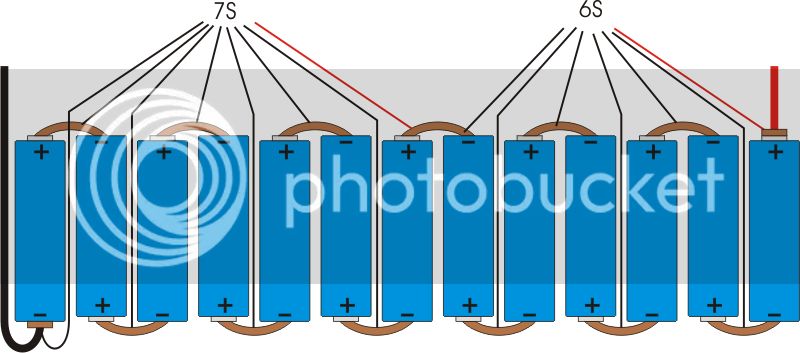Lurkin
100 kW
I have finished the spot welding on a 13S8P pack and I am bench testing a BMS with a 13S1P pack to test and make sure it actually works and will manage the cell groups during charging.
I have the BMS Connected to the pack based on the instructions for it (nothing unusual there) and have the BMS connected to a Yihua DC Power Supply (YH-605D). I've set the power supply to 54.6v as that is what the pack should charge to at 1A.
But the charging behavior is not what I thought it would be. The power supply is constantly switching between CC and CV faster than the display updates the current and and voltage. During this time, I have measured the voltage of individual cells at +4.2v - which is higher than I want them to charge to. It is supposed to have switched to balance charging at 4.2v. Eventually it stops drawing any current at all - presumably it should then bleed the cells and charge again?
- should it be constantly switching between CC and CV (to check the pack voltage?)
- wouldn't it start drawing current again when bleed down is complete and the charging to balance must occur?
The BMS is a 086-13S-40A. Any ides would be much appreciated.
I have the BMS Connected to the pack based on the instructions for it (nothing unusual there) and have the BMS connected to a Yihua DC Power Supply (YH-605D). I've set the power supply to 54.6v as that is what the pack should charge to at 1A.
But the charging behavior is not what I thought it would be. The power supply is constantly switching between CC and CV faster than the display updates the current and and voltage. During this time, I have measured the voltage of individual cells at +4.2v - which is higher than I want them to charge to. It is supposed to have switched to balance charging at 4.2v. Eventually it stops drawing any current at all - presumably it should then bleed the cells and charge again?
- should it be constantly switching between CC and CV (to check the pack voltage?)
- wouldn't it start drawing current again when bleed down is complete and the charging to balance must occur?
The BMS is a 086-13S-40A. Any ides would be much appreciated.


